|
|
The Blakely Burl Tree Project: The
Story
|
The Blakely Burl Tree Project:
From The Ground Up
by Terry Martin |
UNDERSTANDING THE WOOD
When we arrive at the mill we find
Steve under the bed of the Super Ax, using jacks to level the whole machine. He
drags himself tiredly out from underneath to greet us and we learn that he has
been working much of the night. “I wasn’t happy with the way it was tracking,”
he says. “I knew I could do better.” The concern on his face is obvious. Steve
is on show in a way that he never experiences in his regular life and he wants
to do his best for the Project.
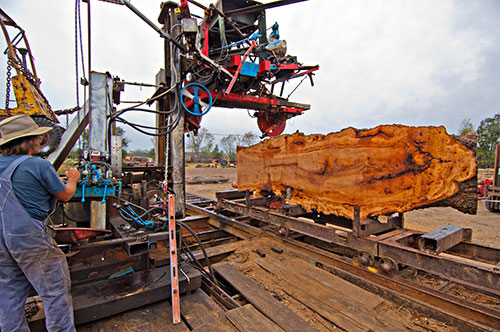
Steve Cross with the Blakely Burl Tree on his Super Ax sawmill.
Photo:
Mark Lindquist
The sawn wood is starting to mount up. One of the most important things that
Mark wants to find out is how the wood will behave as it dries. There are woods
that dry uniformly with little or no warping, while others twist and distort to
the extent that they are unusable. Some timbers are prone to cracking, which is
why Steve has treated the ends of the logs with wax to slow the loss of moisture
through the cut sections. Pecan wood can be used for quality cabinet making and
I saw some excellent pieces that Chris has made when we visited him, but because
nobody has seen a pecan burl before, it is not clear how this wood will behave.
Mark and Steve have agreed to cut some very thin sections to see if the wood is
suitable for veneer. Veneer, or thinly sliced sheets of wood, can be glued to
the surface of less attractive timber, making a valuable resource go further. It
can be used to create impressive tables, wall paneling, decorative inlay and a
whole range of other uses.
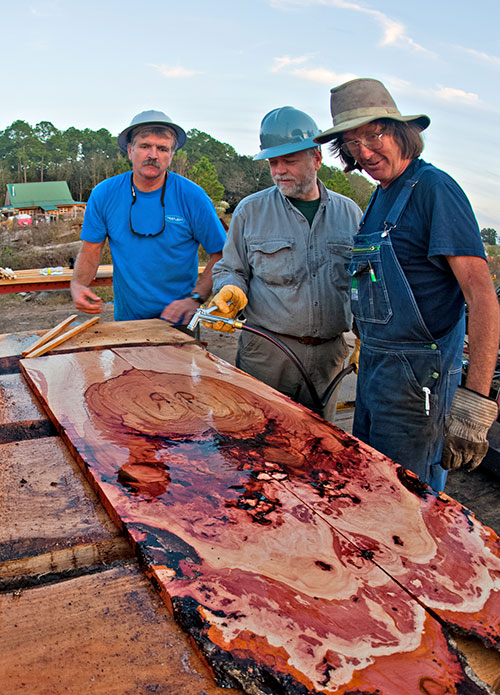
Gary Stevens (left), Mark Lindquist and Steve Cross (right) studying book
matched cut of log section, beginning to understand the burl in the Blakely Burl
Tree wood.
Photo:
John McFadden
Mark chooses a section of log to cut for veneer and as the thin flexible sheets
peel away from the log we can see that Steve’s night-time work has been
worthwhile. With such narrow cuts, even the slightest deviation will render the
wood useless, but Steve grins broadly as the log runs straight and true.
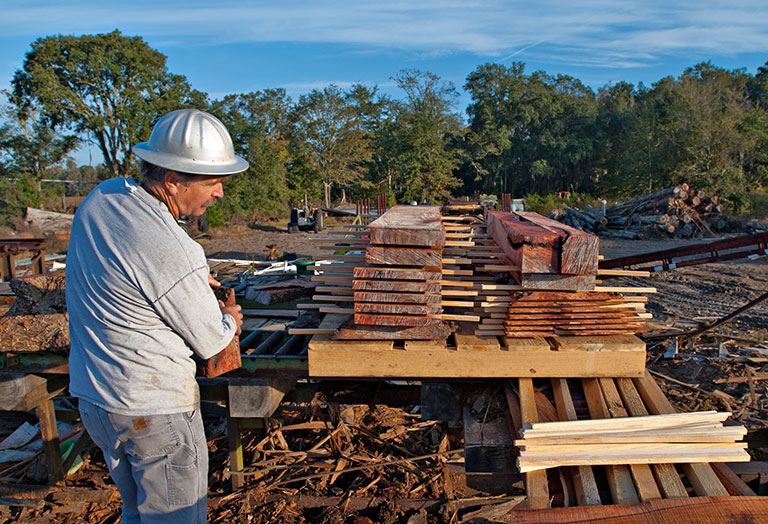
Gary Stevens with veneer cuts and boards from the burl tree.
Photo:
John McFadden
We all
pitch in and stack the veneer carefully, separated by stickers to let the air
circulate and dry the wood uniformly. Almost immediately, however, the veneer
starts to distort. Maybe it is not best suited to thin cutting, so Mark decides
to leave these pieces for now and he will decide later what they can be used
for. After consulting with Gary and Steve, Mark decides it’s best to cut thicker
sections that will have enough structural strength to allow the wood to dry
without moving too much. It’s all part of the learning curve with this unique
tree.
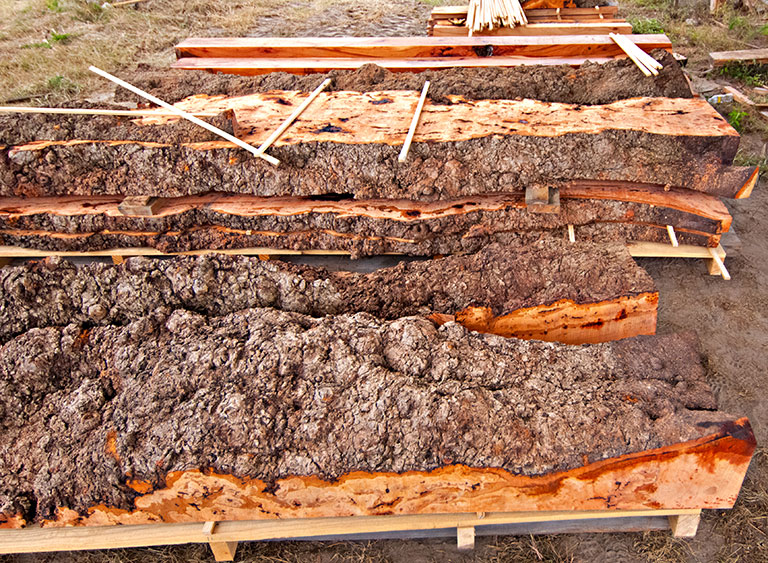
Large flitch cuts from the Blakely Burl Tree atop custom built pallets.
Photo:
Mark Lindquist
So far the cut wood falls into several categories, including the thin veneer
sections, sections up to a few inches in thickness, and thick slabs that
resemble heavy bench tops. All of these are complete “slices” of the log and
bark has been retained on both sides of each piece. Mark wants the art that is
made to reflect the natural qualities of the tree as much as possible and this
bark can be retained as a reference to what was the outside of the tree.
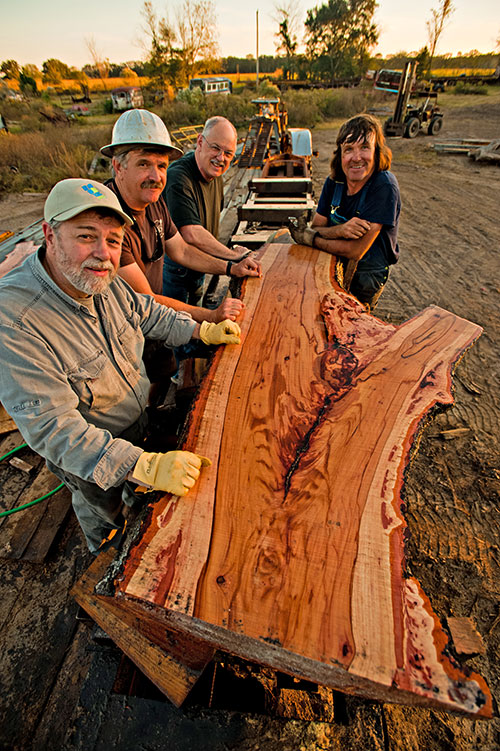
At the sawmill, (left) Mark Lindquist, Gary Stevens, Terry Martin, Steve
Cross
Photo:
John McFadden
Mark has also decided to cut large blocks from key sections of the tree, such as
the crotch areas. This is where the most interesting grain occurs and these
pieces are going to be suitable for sculptural forms. The smaller branches have
been left largely intact as they can later be either milled, or cut into smaller
blocks for carving or turning. The root sections remain as convoluted masses of
twisting wood, waiting for the right people to create one-of-a-kind works from
them.
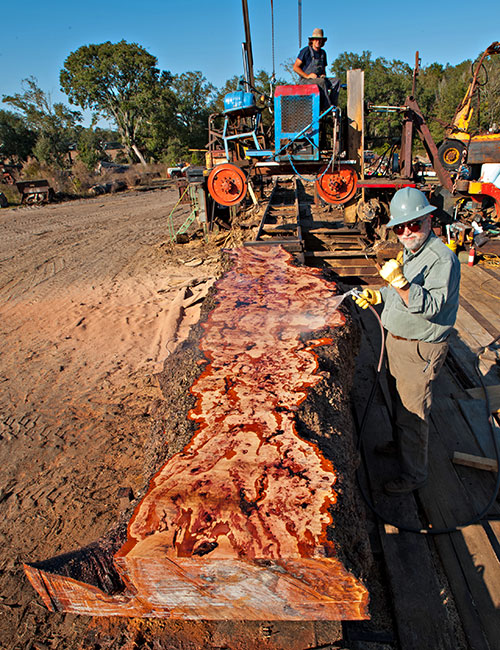
Mark Lindquist hoses down a large flitch section of the Blakely Burl Tree.
Photo:
John McFadden
All of this is why Mark and Gary confer so much about every cut. There is an old
adage in woodwork, “measure twice, cut once,” meaning that you can’t put it back
once it is cut, so you had better be sure. While I watch these two burl masters,
I decide the rule here is “discuss twenty times, start to cut, change your mind
and discuss it twenty more times.” There are no other Blakely Burl Trees and any
mistake will mean the loss of irreplaceable material.
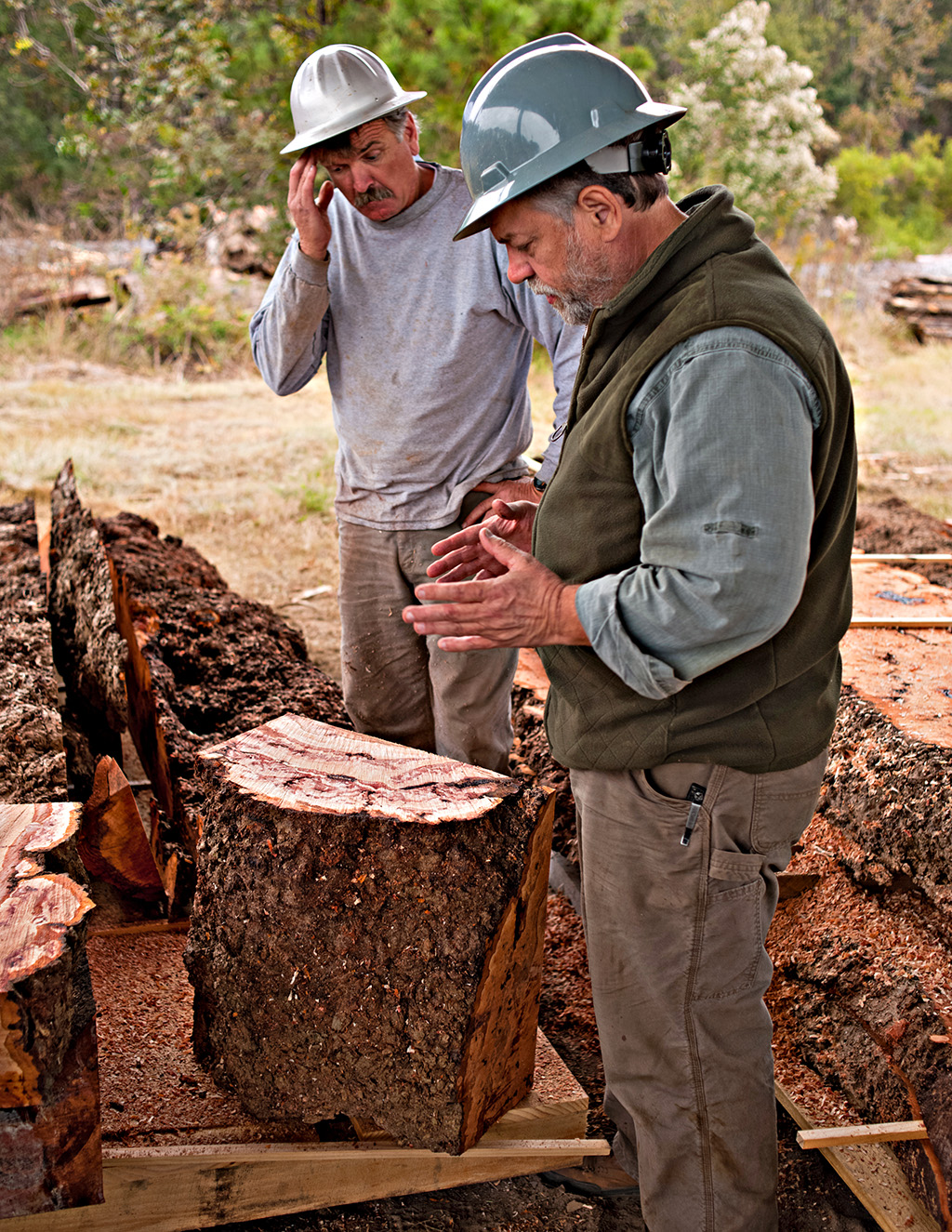
Mark Lindquist (right) and Gary Stevens discuss a thick section to be used for
sculpture. The two will collaborate on a piece for the Blakely Burl Tree
Museum.
Photo:
John McFadden
|
|